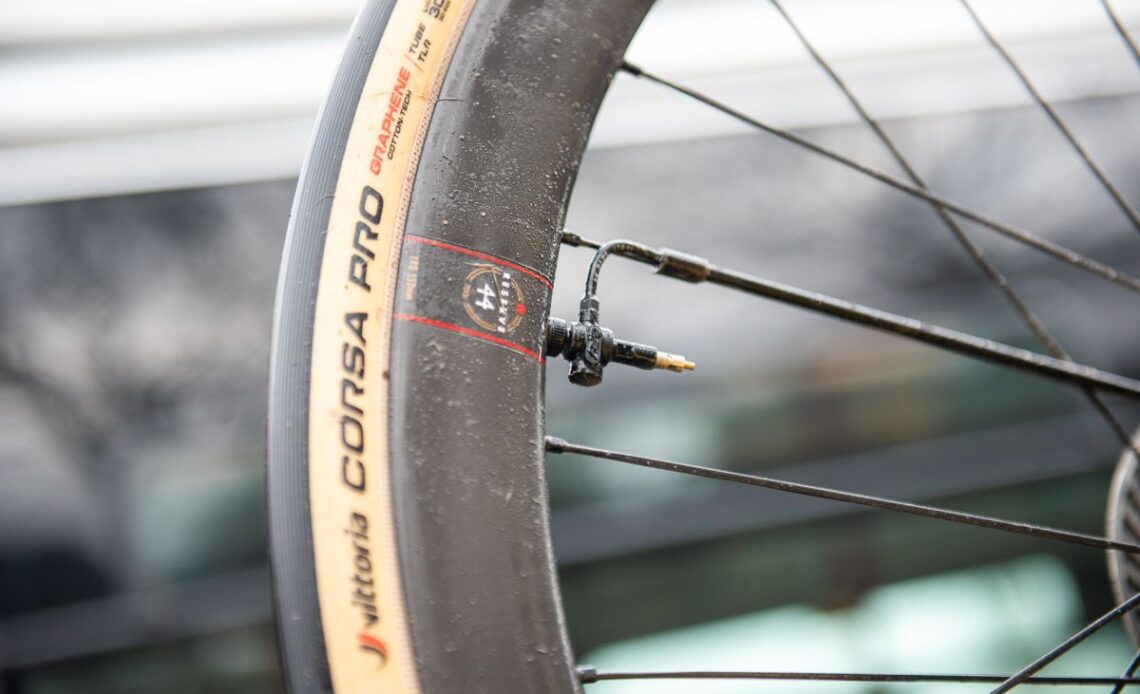We’re still no closer to knowing if five-star favourite Wout van Aert will use the potentially game-changing Gravaa KAPS tyre pressure adjustment system at this weekend’s Paris-Roubaix, despite confirmation from the Jumbo-Visma team that some of its riders will bring the tech to the race.
Speaking after the team’s recon ride on Thursday, the Belgian favourite struck a downbeat tone, speaking freely about injuries he’d sustained during that crash at last week’s Tour of Flanders. However, once the conversation turned to the innovative tyre pressure technology, he played his cards much closer to his chest.
“We’ll see on Sunday who will ride it,” he began.
The system, known simply as KAPS (Kinetic Air Pressure System) is designed by Dutch brand Gravaa. It claims to allow riders to adjust tyre pressures up or down on the fly, with just the touch of a button on the handlebars, via a small motor in the hub and hoses that travel alongside the spokes at either side of the tyre valve. There is also a separate system being used by Team DSM from wheel maker Scope, called the Atmoz, which houses a pressurised reservoir of air in the hub that is released in a similarly simple button press.
As for its benefits, Van Aert continued to say, “We always try to find new things, and it’s a huge innovation. If you can have lower pressure on the cobbles and still have the normal pressure you’re used to on the tarmac, it’s a big-big benefit for all the accelerations in between.”
One of the forces slowing a rider is rolling resistance. When riding on a road, each imperfection or bump in the road, no matter how big or small, deflects a rider’s forward momentum upward as the tyre, wheel, bike and rider are forced to ride up and over it. When a tyre can deform around the bump, more of that forward momentum can be maintained, meaning a rider’s speed is also maintained. Lower tyre pressures mean the tyres can deform more easily around larger imperfections, but they are also slower on smooth surfaces due to increased friction from a larger contact patch with the road.
The Paris-Roubaix route sees riders switch from smooth roads to gruelling cobblestones and back again on a regular basis, so riders are forced to find a tyre pressure balance somewhere in between the optimal pressure for smooth roads and the optimal pressure for cobbles.
Ultimately, given the…
Click Here to Read the Full Original Article at CyclingNews RSS Feed…

